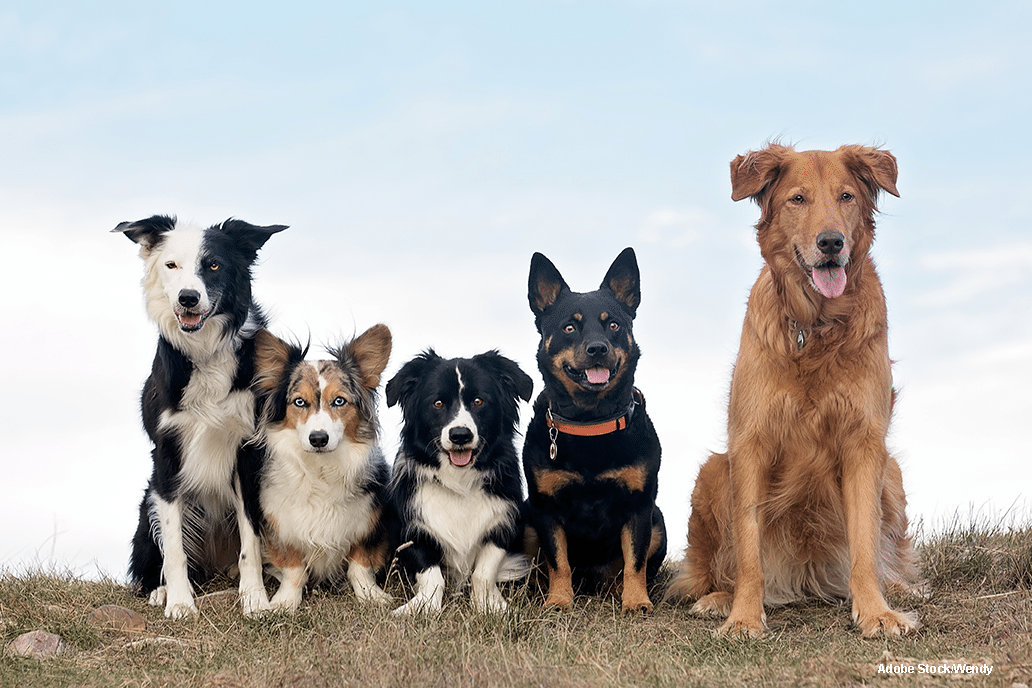B y Debra Mitts-Smith
Do you have a dog? Then you probably know that wolves are the ancestors of dogs. Around 15,000 to 30,000 years ago, the wolf was the first animal to be domesticated. It is also the only large predator to have ever been domesticated.
When, where, why and how were wolves domesticated?
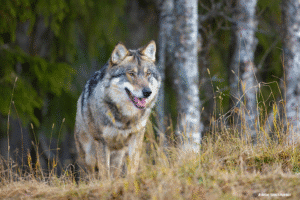 Wolf domestication is an important, current area of research that draws experts (and research money) from around the world. Researchers use an array of techniques such as comparing prehistoric and current canine remains, studying archeological artifacts and performing genetic testing. They come from many disciplines such as sociology, human evolution, archaeology, paleontology and genetics to attempt to answer the questions of when (15,000-30,000 years ago), where (most likely Asia), why and how the wolf became the dog. Archeological artifacts and canine skeletal remains uncovered at human settlements provide clues to the benefits humans got from feeding, raising and living with wolves. These included wolves guarding ‘their’ humans’ settlements, being social and hunting companions, helping transport carcasses of large prey animals and, at times, even being a source of food and hides. Yet, a full understanding of how the wolf became domesticated remains elusive.
Wolf domestication is an important, current area of research that draws experts (and research money) from around the world. Researchers use an array of techniques such as comparing prehistoric and current canine remains, studying archeological artifacts and performing genetic testing. They come from many disciplines such as sociology, human evolution, archaeology, paleontology and genetics to attempt to answer the questions of when (15,000-30,000 years ago), where (most likely Asia), why and how the wolf became the dog. Archeological artifacts and canine skeletal remains uncovered at human settlements provide clues to the benefits humans got from feeding, raising and living with wolves. These included wolves guarding ‘their’ humans’ settlements, being social and hunting companions, helping transport carcasses of large prey animals and, at times, even being a source of food and hides. Yet, a full understanding of how the wolf became domesticated remains elusive.
Currently two main theories seek to explain how the wolf became domesticated. The pup collection, adoption and artificial selection hypothesis imagines a scenario where humans collected pups from the den and brought them back to their settlement. There, the humans fed, raised and socialized them with human pack members. Over time, humans found the wolves to be useful and so kept them, allowing those wolves that were the most docile to breed while driving away or killing those that were too aggressive. By allowing socialized and mellow wolves to mature and have offspring, humans began to selectively, if inadvertently, breed the more docile wolves and, within generations, transform wolves into dogs.
A more recent theory posits that humans did not domesticate wolves. Instead, wolves self-domesticated. In this scenario, human garbage heaps—an easy source of food—attracted wolves to human settlements. Wolves that were less fearful and that could tolerate being near humans stayed close to this easy food source, following the human groups as they migrated from one area to another. Less fearful and less aggressive wolves bred with the other ‘friendly’ wolves they encountered at the waste heaps. Humans would have driven off or killed aggressive wolves, leaving more docile ones to breed and pass on their more amenable social traits.
Most research approaches wolf domestication from anthropological or sociological viewpoints which seek to understand how wolf domestication benefitted and changed humans. But humans are only part of the equation. A recent article by wolf biologist L. David Mech and veterinarian-archaeologist Luc A.A. Janssens assesses the plausibility of these two theories of wolf domestication by considering research on wild wolves, wolf biology and archaeology as they relate to domestication. Mech and Janssens also include insights from their own experiences and observations.
Using the behavior of modern wolves to explain that of wolves from the time of their domestication during the Upper Pleistocene (roughly 15,000 years ago) might be considered problematic. But as the Mech and Janssens explain, the behavior of present-day North American and Eurasian wolf populations—two wolf populations that have been separated for 15,000 years—exhibit the same behaviors, diet, hunting methods and interactions with people. This suggests that wolf behavior has been stable over thousands of years and that prehistoric wolves and modern wolves share similar traits and behaviors.
Wolfish traits, behaviors and way of life
In assessing the plausibility of these two theories, Mech and Janssens considered traits and behaviors that help render wolves conducive to domestication. These include the wolf’s social nature and way of life such as the reliance of pups on older pack members for nourishment; the deep social bonds formed between pack members; the varied personalities of wolves; the wolf’s diet; the wolf’s memory (i.e., where food is cached); the wolf’s tolerance for inbreeding; for establishing and protecting territories, and the wolf’s ability to adapt.
Mech and Janssens also addressed potential barriers to domestication of the wolf. One is the wolf’s inherent fear of humans. For thousands of years, humans and wolves have pursued the same prey species, which renders them not only competitors but also adversaries who potentially pose a threat to each other. On the part of humans, this has led to the persecution of wolves across time and cultures. Except for the wolves in the High Arctic of North America, a region where there are few humans and little hunting of wolves by people, wolves fear humans. Mech and Janssens argue that this innate “fear of humans must have resulted from selection acting on wolves’ negative interactions with humans, who had weapons to kill wolves.” And even though wolves have the ability to kill humans, they, in general, do not seem to regard humans as prey animals.
This inherent fear of humans undermines the self-domesticating theory in particular. In it, human garbage sites attracted wolves to human settlements. Since pups stay inside or near their den or rendezvous sites until they are six months old, those wolves scavenging at human waste sites would have been older, perhaps dispersing wolves, that were already fearful of humans. In contrast, in the pup collection and adoption theory, humans collected pups from or near dens when pups were 10 days to three weeks old–too young to be fearful of the humans who adopted and raised them. Further, the act of feeding the pups provided an opportunity for humans and pups to bond with each other.
Friendliness and a lack of fearfulness are the basis for the self-domestication theory. Those wolves that were friendly and brave could tolerate the presence of humans better than wolves which displayed aggressive or fearful behavior. Yet, as Mech and Janssens point out, wolf behavior can vary and change towards both people and wolves depending on the situation. For instance, they can become more protective and aggressive when pups are present. This suggests that different contexts, not genetic traits, trigger certain behaviors.
Keeping wolves raised by humans reproductively separate from wild wolves is requisite for successful domestication. Mech and Janssens point out that neither theory adequately explains how this was done. Instead, they propose that one way to keep human-raised wolves separate from wild wolves is for humans to feed them: “The key is humans regularly feeding the wolves and keeping only those able to live harmoniously with humans.” For wolves to associate food with humans requires more than wolves scavenging garbage heaps; it requires humans feeding them directly by hand as put forth by the pup adoption scenario. Feeding wolves directly creates an association (and memory) of humans with food. It fosters the wolves’ dependency on humans while developing strong bonds between the two species and encouraging wolves to stay near humans. They will even generalize this behavior towards other humans.
Revised theory of Wolf Domestication
Mech and Janssens’ review of the research and observations on modern
wolves concludes that the self-domesticating hypothesis fails to align with wolf traits and behaviors. Instead, the pup collection, adoption and artificial selection theory aligns better with what is known about the lives, traits and behaviors of wolves and their interactions with humans. The authors also propose a revised and expanded understanding of how pup adoption and collection occurred and led to the domestication of the wolf.
In this proposed scenario humans ideally removed pups from the den site by the age of three weeks. Adopting the pups meant feeding them, and if the pups were especially young this could include breastfeeding by human females. Feeding them from such a young age not only made the pups dependent on humans for food but also helped to develop deep social bonds between the pups and the humans caring for them.
As the pups aged, the humans kept only those that were docile and could live peacefully with humans. To keep them near, humans continued to feed them while driving away or killing wolves that were too aggressive.
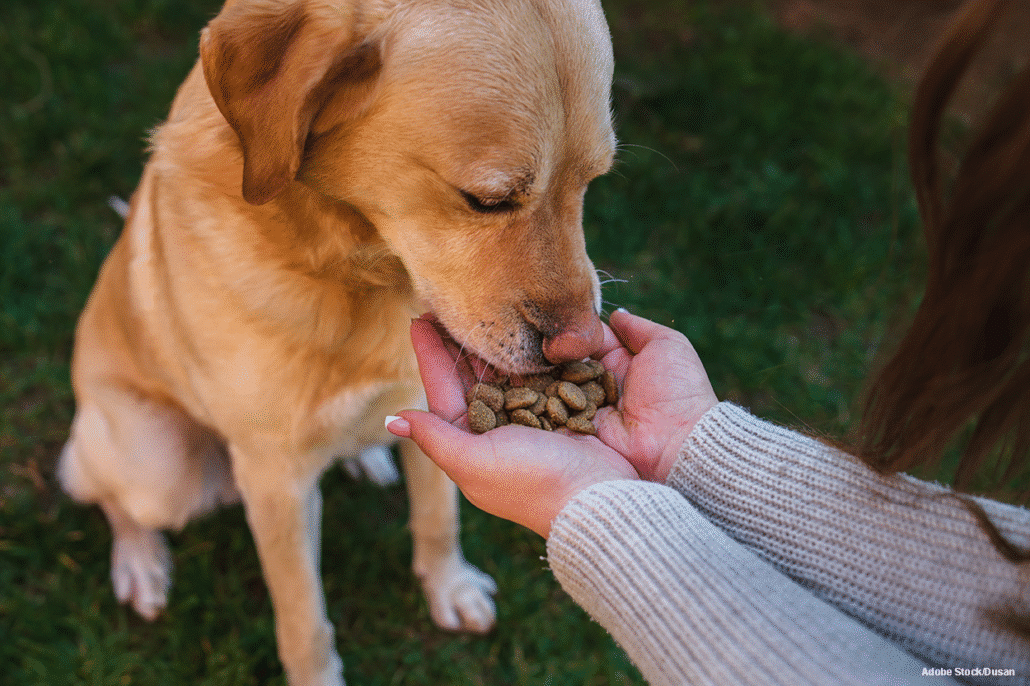
Mature female wolves living with humans bred with either a male sibling (although wolves in general do not inbreed, they can withstand some inbreeding) or a male from another litter of wolves raised by humans. Breeding with wild wolves would have been possible but probably a rare occurrence, since the mature wolves raised by humans would probably have scent marked the borders of the humans’ settlement to keep wild wolves away.
Over generations humans continued to feed and raise wolves, keeping and allowing only the most mellow ones to breed (and hence selectively breeding for temperament). With time, the wolves’ characters and appearance changed from that of a wolf into a dog.
Food: the way to a wolf’s heart
According to Mech and Janssens, the most important factor in taming and domesticating the wolf was food. Feeding and nurturing pups made wolves dependent on humans for food while fostering attachments between the two species. Regular and adequate sources of food kept not only pups but also older wolves close to humans and their settlements. Further, hunting large hooved and horned prey is a dangerous and uncertain proposition that often requires traveling long distances. Mech and Janssens point out that if there is an easier food source available wolves tend to use it: “If humans provide the wolves with enough food on a regular basis…they would have little reason to kill their own prey, the main reason wild wolves roam so much.” In the company of humans, prehistoric wolves (and later, the dogs they became) found a reliable source of food.
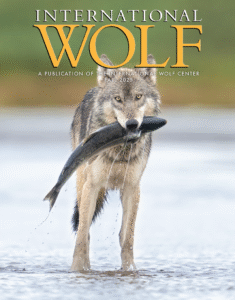 In the Company of Wolves was originally published in the Fall 2025 edition of International Wolf magazine, which is published quarterly by the International Wolf Center. The magazine is mailed exclusively to members of the Center.
In the Company of Wolves was originally published in the Fall 2025 edition of International Wolf magazine, which is published quarterly by the International Wolf Center. The magazine is mailed exclusively to members of the Center.
To learn more about membership, click here.
About the author: Debra Mitts-Smith researches and writes about the wolf in literature and art. She is currently working on a cultural history of the wolf.
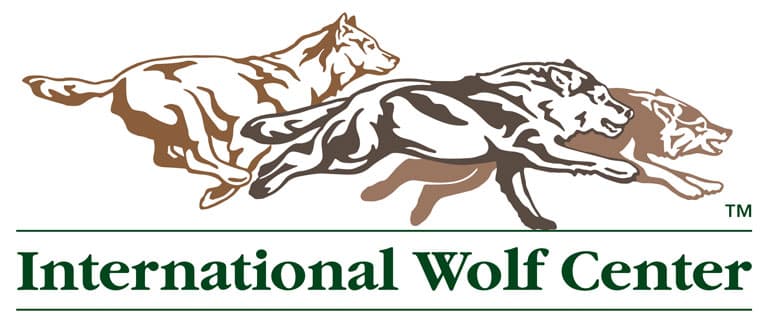
The International Wolf Center uses science-based education to teach and inspire the world about wolves, their ecology, and the wolf-human relationship.

